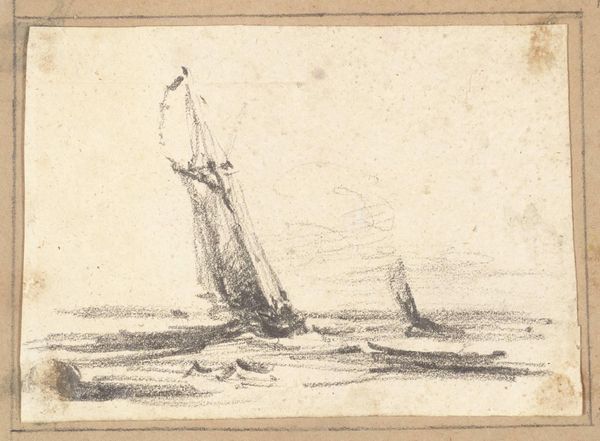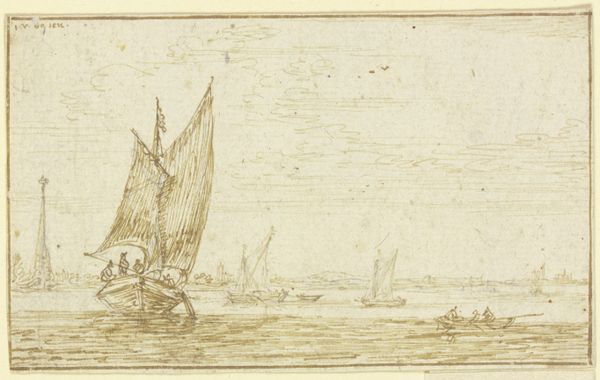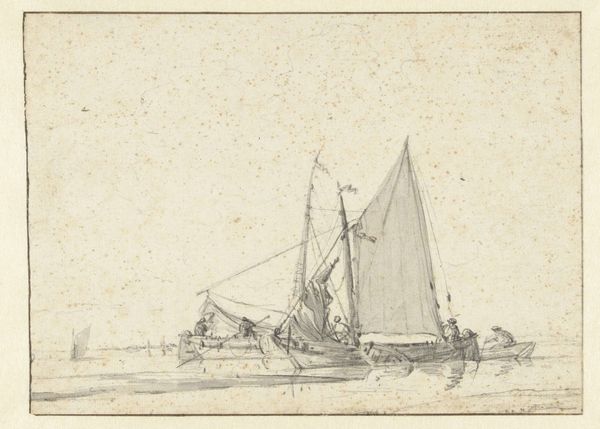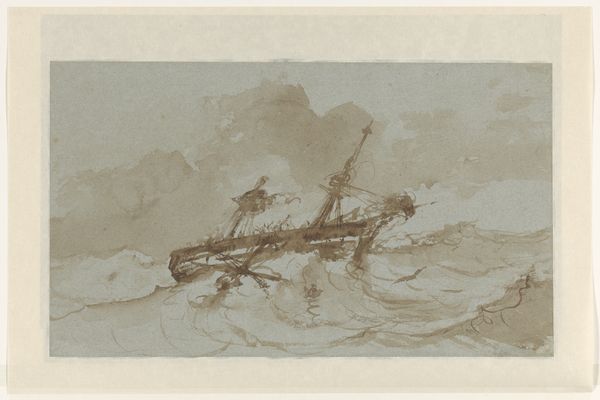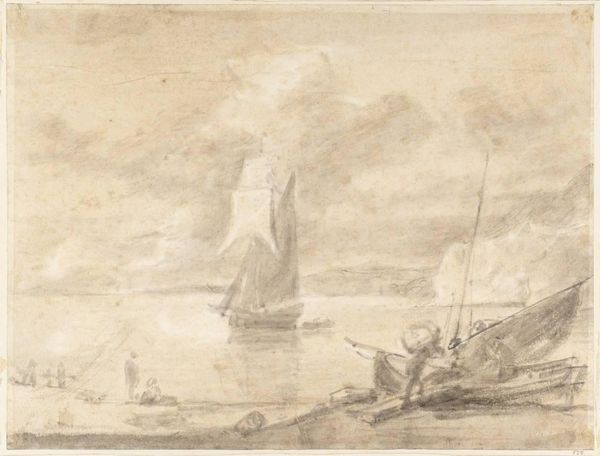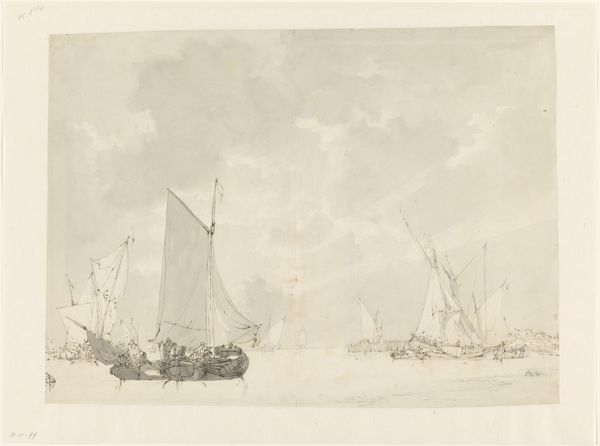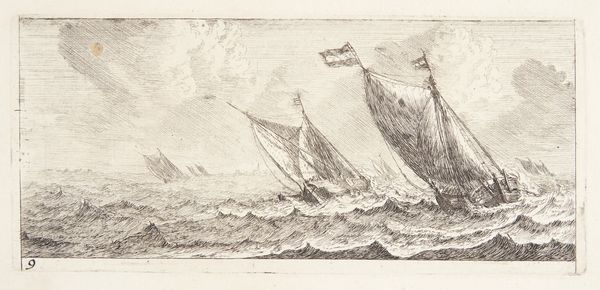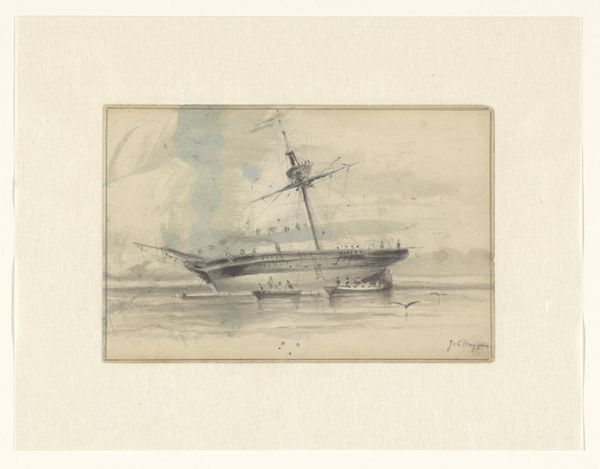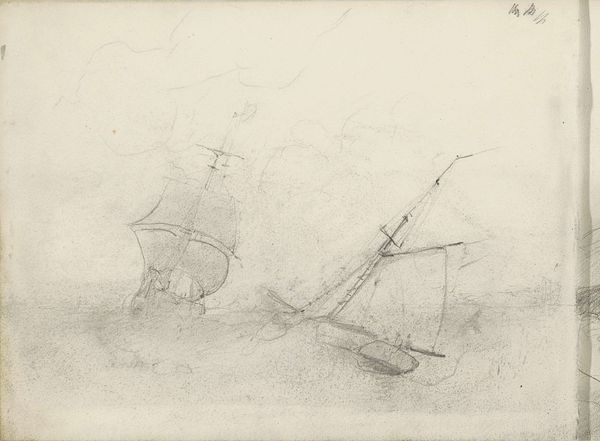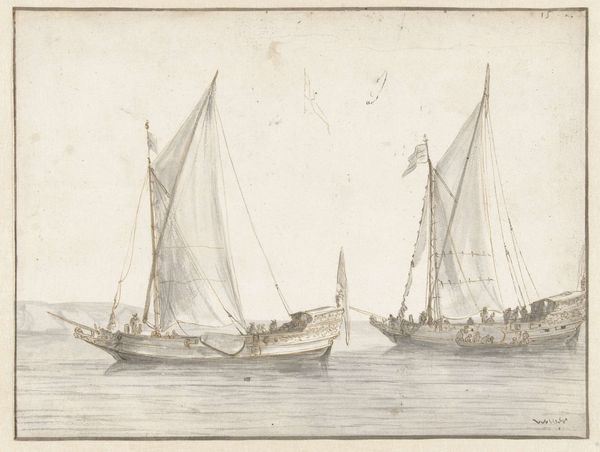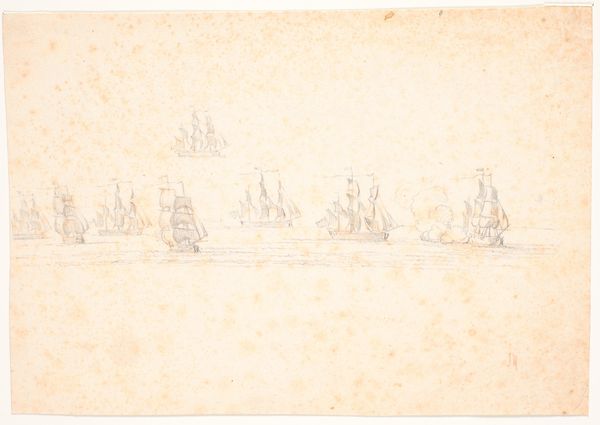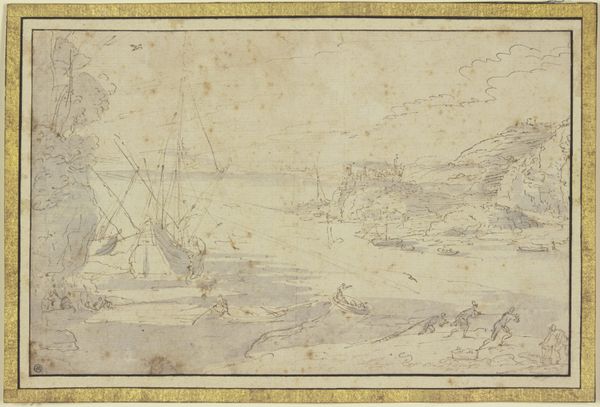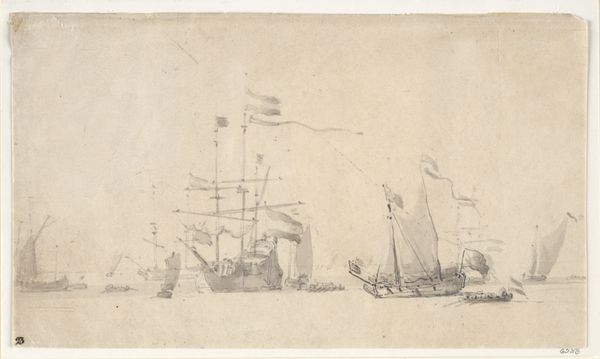
drawing
#
drawing
#
landscape
#
romanticism
#
realism
Dimensions: height 57 mm, width 83 mm
Copyright: Rijks Museum: Open Domain
Editor: Andreas Schelfhout's "Storm op zee met tweemaster," created sometime between 1797 and 1870, is a drawing depicting ships caught in a tumultuous sea. The limited tonal range creates an atmosphere of vulnerability. What stands out to you about the formal qualities of this piece? Curator: The drawing masterfully employs line and shading to convey the power of the storm. Note the diagonal emphasis throughout, particularly in the crashing waves and tilted masts. This dynamism is crucial to the overall reading. How does the distribution of light affect your perception of depth? Editor: I see how the lighter areas around the ships draw my eye, while the darker washes suggest the churning depths. Is this an example of how formal elements alone can evoke an emotional response, regardless of subject? Curator: Precisely. Observe how the restricted palette actually enhances the emotional impact, creating a sense of bleakness. Consider, too, the negative space. The vast expanse of white paper above the scene amplifies the feeling of isolation and the ships' precarious position. Does the artist's calculated asymmetry contribute to the work's realism, in your view? Editor: Yes, it certainly does. The ships are off-center, which makes the drawing feel more authentic. Curator: Indeed. The realism, then, stems from the skillful manipulation of formal elements to imply depth, movement, and mood, as well as the calculated arrangement of forms within the pictorial space. Editor: This drawing illustrates how the artist transforms the paper itself into a stage for conveying powerful emotions, even with simple composition. I've certainly gained a new appreciation for how to deconstruct visual art!
Comments
No comments
Be the first to comment and join the conversation on the ultimate creative platform.
